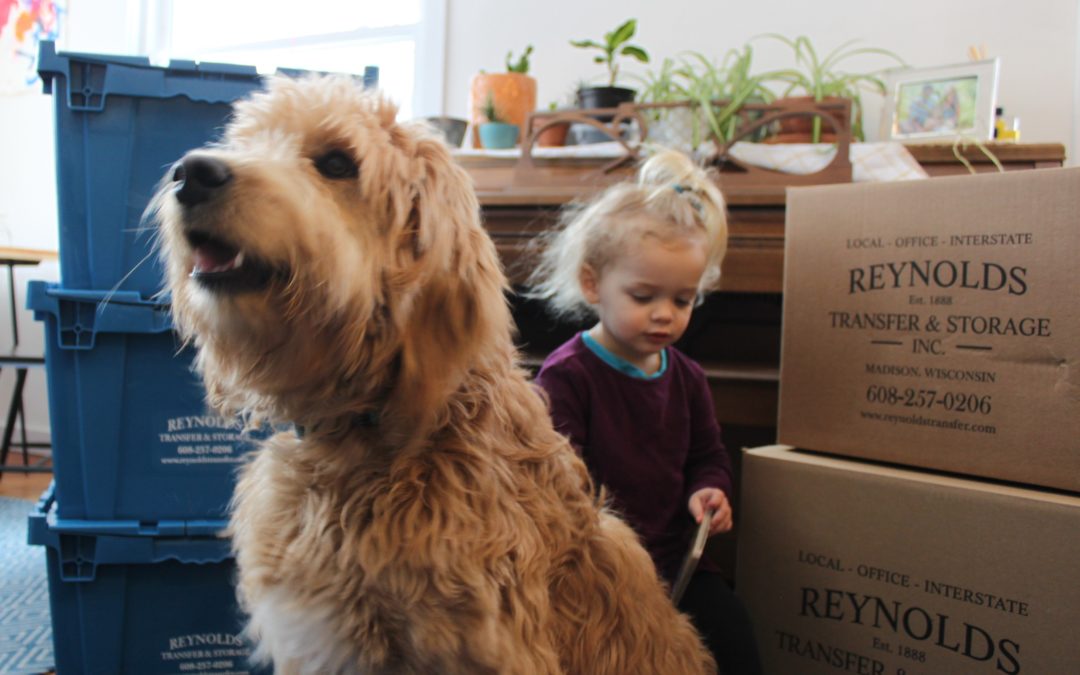Moving With Pets Made Easier: Key Tips for a Smooth Transition
Moving can be overwhelming for the whole family, including your pets. Most animals are creatures of habit and tend to become stressed in response to change. However, there are steps you can take to make moving with pets as stress-free as possible.
Before the Move
Once you know you will be moving, it is never too early to start planning and preparing your pet for the move. Start by notifying your vet. You will need to obtain copies of your pet’s medical records, including vaccinations, as well as any prescription medications needed by your pet. If you are moving across state lines, you may also need a health certificate from the vet. You can also see if they can recommend a vet in your new neighborhood.
Get your pet used to their carrier or crate. Carry them around the house in their carrier to get them used to the motion, rewarding them with treats and play time. If your pet hasn’t travelled in a car, take them on short car rides. Try to create as positive an experience as possible. For example, consider taking your dog on a drive to the dog park.
Your pet is likely not used to seeing moving boxes lying around. Start packing early and pack over time so your pet can adjust to the boxes and the changes in your home. Also, make sure you are taking breaks from packing to spend time with your pet.
While you are packing, put together an “unpack first” box of supplies for your pet. Include your pet’s food, toys, bedding, treats, grooming tools, kitty litter, etc. Also pack extra water from your home, as water will vary by region and it may take your pet some time to adjust to the water at your new home.
If you have a more exotic pet, research the regulations of your new city, county, and state for legislation pertaining to your animal well before your move. Each state has different laws pertaining to exotic pet ownership, and local governments may have additional restrictions. Even not-so-exotic pets may face limitations. For example, urban chicken ownership has been on the rise, but not every city welcomes poultry.
Keep in mind that pets respond to their owner’s emotions. If the move is stressing you out, it is more likely to cause stress for your pet. Try to remain calm to help your pet do the same.
During the Move
Moving With Pets Safely During Travel
During the move, keep your pet out of the way and in a quiet area. This will help keep them calm and safe, especially if people are coming and going from your home. Ensure your pet has adequate food and water as well as toys to keep them busy, and check in on them regularly. Consider boarding your pet, sending them to doggy daycare, or seeing if they can stay with a friend while you move out of your home.
If possible, transport your pet to your new home yourself. If you are driving, move your pets in your own vehicle like you would when travelling with your pets. This will give them a sense of comfort and familiarity. Small animals such as cats, rabbits, or guinea pigs should be transported in a hard-sided carrier. It may help calm your pet if you cover the carrier with a towel or sheet. Dogs should be secured during transportation, whether that is with a safety harness, a barrier, a crate, or a carrier. Dogs should also be wearing their ID tag and rabies vaccination tag. Have a pet first aid kit handy as well as extra towels in case you need to clean up after your pet.
Use caution when letting your pet out. For animals in a carrier, wait until you have arrived at your destination and are securely inside before letting your pet out of the carrier. Make sure dogs are leashed before opening the car door to let them out. This is especially important during a move, as it is easy for pets to get lost in a new, unfamiliar neighborhood. If you need to stop overnight during your move, look up pet-friendly hotels along your route and call ahead. Verify they accept pets and have pet-friendly rooms available, as some hotels limit the rooms in which pets are allowed.
If you will be flying to your new home, look into airline pet policies. Some airlines permit pets in the passenger cabin if they fit in a certain sized carrier that fits under the seat in front of you. Larger pets may travel as cargo. Book your flights as far in advance as possible, as the number of pets per flight may be limited.
If you are unable to transport your pet yourself, work with an animal relocation company to get your pets to your new home. These companies specialize in moving your pet safely and comfortably, taking care of permitting and other logistics so you can bring your pet home. Animal shipping companies are also helpful if you have a larger pet, such as a horse.
After the Move
Once you have made it to your new home, inspect the entire place before giving your pet free reign. Look for holes in the wall, gaps in fencing, open windows, pest control traps, exposed wires and cords, chemicals, toxic plants, and anything else that could be hazardous to your pet.
Start with keeping your pet in one room. Surround them with familiar belongings and once they are feeling comfortable, slowly introduce them to the rest of the house. Place your pet’s items in similar locations to your previous home and keep a similar schedule. For example, if your cat’s litter box used to be in the bathroom, put the litter box in the bathroom of your new home as well. Make changes to your routine slowly.
If your pet is microchipped, update your contact information and address. Also make sure to update your pet’s ID tags if they include your address.
Once you moved in, find a reputable vet for your pets. Schedule a checkup with their new vet to establish care. This way, if your pet has a medical emergency, you’ve already established a relationship with a local vet clinic.
What are your tips for moving with pets? If you’re looking for a moving company to help with your upcoming move, contact us for more information!


Recent Comments